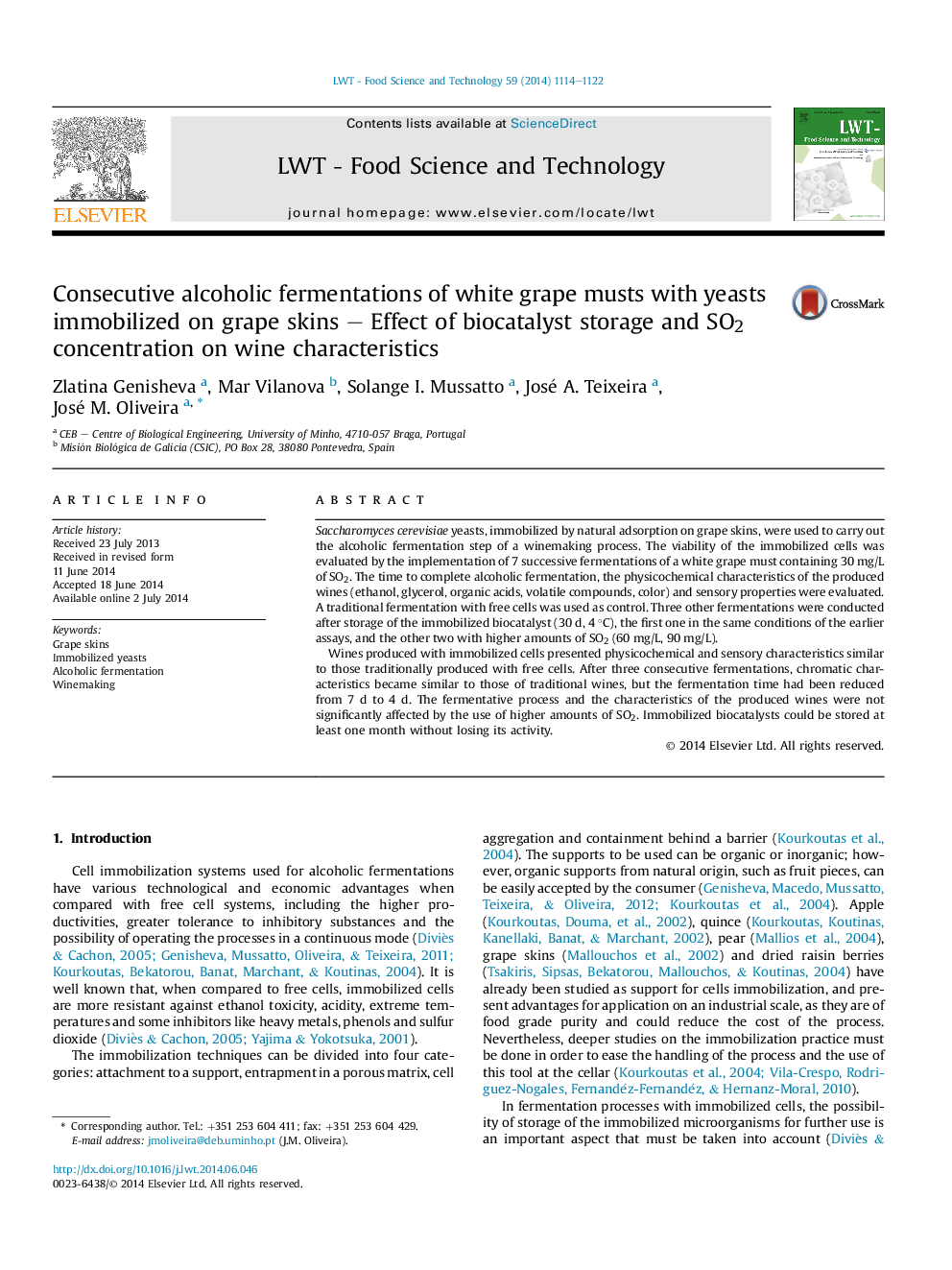| Article ID | Journal | Published Year | Pages | File Type |
|---|---|---|---|---|
| 6402705 | LWT - Food Science and Technology | 2014 | 9 Pages |
â¢Immobilized Saccharomyces cerevisiae on grape skins conducted alcoholic fermentations in winemaking twice faster than free cells.â¢At least 10 consecutive fermentations may be carried out without losing yeasts biological activity.â¢The immobilized systems can be stored for at least 30 d at 4 °C without losing its operational stability.â¢Immobilized yeast cells showed good resistance against unusual high amounts of sulfur dioxide.â¢Wines produced with immobilized cells were similar to those produced with free cells.
Saccharomyces cerevisiae yeasts, immobilized by natural adsorption on grape skins, were used to carry out the alcoholic fermentation step of a winemaking process. The viability of the immobilized cells was evaluated by the implementation of 7 successive fermentations of a white grape must containing 30 mg/L of SO2. The time to complete alcoholic fermentation, the physicochemical characteristics of the produced wines (ethanol, glycerol, organic acids, volatile compounds, color) and sensory properties were evaluated. A traditional fermentation with free cells was used as control. Three other fermentations were conducted after storage of the immobilized biocatalyst (30 d, 4 °C), the first one in the same conditions of the earlier assays, and the other two with higher amounts of SO2 (60 mg/L, 90 mg/L).Wines produced with immobilized cells presented physicochemical and sensory characteristics similar to those traditionally produced with free cells. After three consecutive fermentations, chromatic characteristics became similar to those of traditional wines, but the fermentation time had been reduced from 7 d to 4 d. The fermentative process and the characteristics of the produced wines were not significantly affected by the use of higher amounts of SO2. Immobilized biocatalysts could be stored at least one month without losing its activity.
